
Gingered Lemon-Fig Preserves with Pomona’s Pectin
The team that created Pomona’s Universal Pectin, a sugar-free, preservative-free, low-methoxyl citrus pectin, is celebrating their namesake, Pomona, this month. Pomona was the Roman goddess of fruitful abundance. Her name comes from the Latin word pomum, “fruit,” specifically orchard fruit. She watches over and protects fruit trees and cares for their cultivation.
Preserving with Pomona’s Pectin is the first official Pomona’s Universal Pectin cookbook and it explains how to use Pomona’s to create low sugar, or no sugar marmalades, preserves, conserves, jams, and jellies. The book includes many recipes, including the one we are sharing today – Gingered Lemon-Fig Preserves.
In this spectacular preserve, a touch of heat from the ginger and a little tartness from the lemons beautifully highlight the lushness of fresh, ripe figs. Try serving sandwiched between gingersnap cookies to accentuate its flavor profile. To ensure proper acidity levels, be sure to use commonly available, full-acid lemons such as Eureka or Lisbon lemons in this recipe.

Excerpted from Preserving with Pomona’s Pectin by Allison Carroll Duffy (Fair Winds Press, June 2013).
Yield: 4 to 5 half-pint (8-ounce) jars.
Before You Begin: Prepare calcium water. To do this, combine ½ teaspoon calcium powder (in the small packet in your box of Pomona’s pectin) with ½ cup water in a small, clear jar with a lid. Shake well. Extra calcium water may be stored in the refrigerator for future use.
Wondering what calcium water is? Calcium water is a solution of the monocalcium phosphate powder (food-grade rock mineral source) that comes in its own packet with every purchase of Pomona’s Pectin. The Pomona’s Pectin directions tell you how to make calcium water with the calcium powder. Pomona’s Pectin recipes call for calcium water because the pectin is activated by calcium, not by sugar. You can read more about calcium water here.
- 2 pounds ripe figs
- 2 tablespoons peeled finely grated ginger root
- 7 medium lemons divided
- 4 teaspoons calcium water
- 1¼ cups sugar
- 3 teaspoons Pomona’s pectin powder
-
Wash your jars, lids, and bands. Place jars in canner, fill canner 2/3 full with water, bring canner to a rolling boil, and boil jars for 10 minutes to sterilize them. (Add 1 extra minute of sterilizing time for every 1000 feet above sea level.) Reduce heat and allow jars to remain in hot canner water until ready to use. Place lids in water in a small sauce pan, heat to a low simmer, and hold until ready to use.
-
Rinse figs, remove stems, and slice them in half lengthwise. (Cut them into smaller pieces if you prefer, or if you’re working with large figs.) Combine figs in a saucepan with grated ginger.
-
Wash lemons thoroughly. Using a vegetable peeler, slice off long pieces of the exterior of some of the lemon peels, avoiding the inner white part. Then, using a chef’s knife, slice these pieces into very thin strips about 1-inch long. Repeat this process until you have accumulated ¼ cup of thin, 1-inch long strips. Add these strips to the fig mixture.
-
Slice lemons in half and squeeze out their juice, discarding the remaining peels. Divide the juice, setting aside 1/3 cup for later use. Add the remaining quantity to the fig mixture.
-
Bring the fig mixture to a boil over high heat, reduce heat, and simmer, covered, for 12 to 15 minutes or until lemon peels are soft, stirring occasionally. Remove from heat.
-
Measure 4 cups of the cooked fig mixture and return the measured quantity to the saucepan. Add the reserved 1/3 cup lemon juice and calcium water and mix well.
-
In a separate bowl, combine sugar and pectin powder. Mix thoroughly and set aside.
-
Bring fig mixture back to a full boil over high heat. Slowly add pectin sugar mixture, stirring constantly. Continue to stir vigorously for 1 to 2 minutes to dissolve pectin while the preserves come back up to a boil. Once the preserves return to a full boil, remove from heat.
-
Can Your Preserves: Remove jars from canner and ladle jam into hot jars, leaving ¼ inch of headspace. Remove trapped air bubbles, wipe rims with a damp cloth, put on lids and screw bands, and tighten to fingertip tight. Lower filled jars into canner, ensuring jars are not touching each other and are covered with at least 1 to 2 inches of water. Place lid on canner, return to a rolling boil, and water bath process for 10 minutes. (Add 1 extra minute of processing time for every 1000 feet above sea level). Turn off heat and allow canner to sit untouched for 5 minutes, then remove jars and allow to cool undisturbed for 12 to 24 hours. Confirm that jars have sealed, then store properly.
Grate That Ginger!
Using a paring knife or a vegetable peeler, slice the thin, brown skin off a chunk of fresh, firm ginger root. Then, using a fine mesh grater, grate the ginger root. Don’t peel the whole root at once—continue to peel as you go along, so that you don’t peel more than you need. Grating the ginger will create a good bit of juice; be sure to incorporate it into your measured quantity of grated ginger.
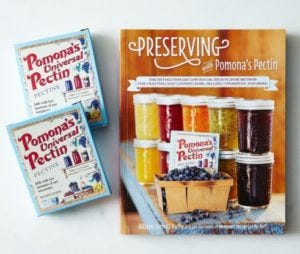
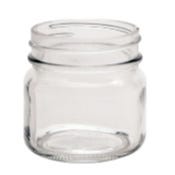
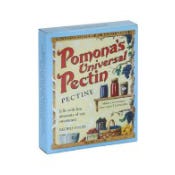
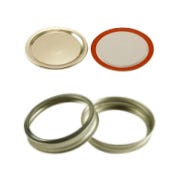



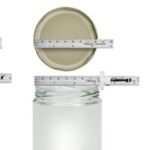

Perfect timing. My lemon tree is covered with lemons that need to be used and the fruit on my fig tree just began to ripen this week.
this looks interesting! If I can find figs, I’ll have to give this a go
Thanks for the chance!
Just found your site and love the fig and ginger recipe. Waiting on my figs!
Can’t wait to make your fig and ginger recipe tomorrow with my figs! It’ll be my first experience using Pomona pectin. Fun!